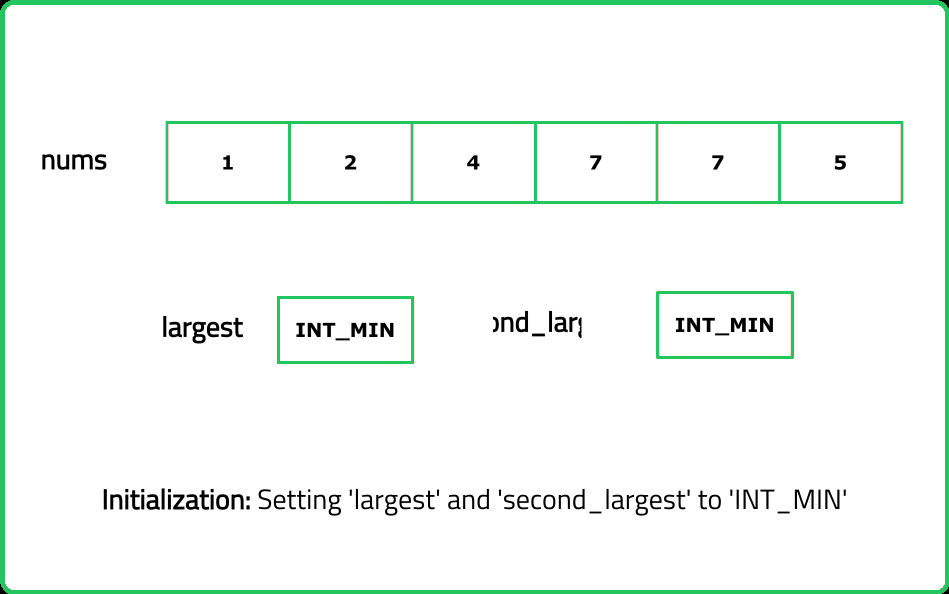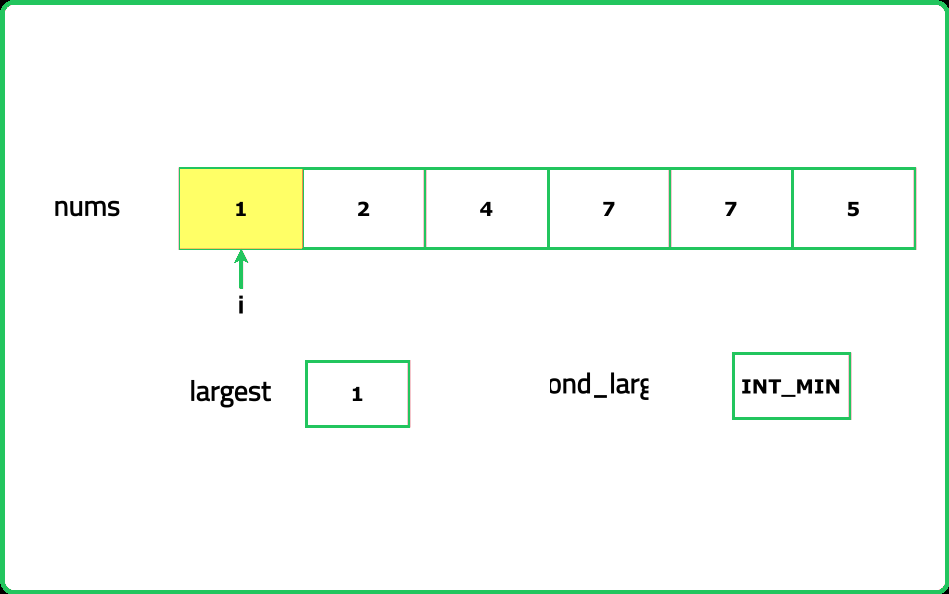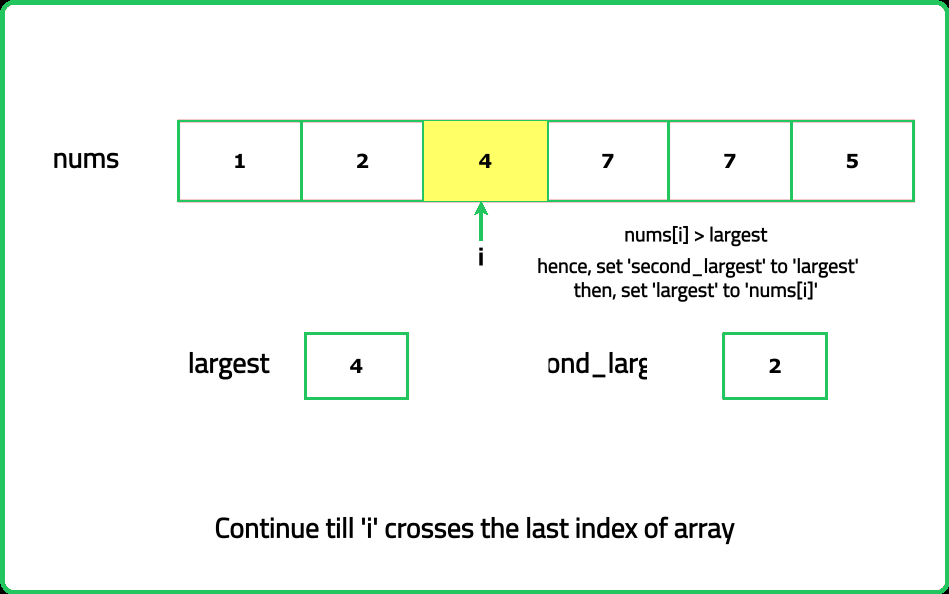Second Largest Element
Arrays
Fundamentals
Easy
- The underlying concept of finding the second largest number in an array is a crucial part of recommendation algorithms utilized in e-commerce platforms and streaming services
- In these systems, it is often required not only to find the most relevant choice (the largest element), but also the next best alternatives (the second largest, third largest, etc
- ) to provide users with a variety of options, hence improving user experience and engagement
Given an array of integers nums, return the second-largest element in the array. If the second-largest element does not exist, return -1.
Examples:
Input: nums = [8, 8, 7, 6, 5]
Output: 7
Explanation: The largest value in nums is 8, the second largest is 7
Input: nums = [10, 10, 10, 10, 10]
Output: -1
Explanation: The only value in nums is 10, so there is no second largest value, thus -1 is returned
Input: nums = [7, 7, 2, 2, 10, 10, 10]
Constraints
- 1 <= nums.length <= 105
- -104 <= nums[i] <= 104
- nums may contain duplicate elements.
Hints
- Use two variables to track the largest and second-largest elements as you iterate through the array. Update the second-largest only if you find an element smaller than the largest but larger than the current second-largest.
- Avoid sorting, as a single traversal O(n) is sufficient to find the second-largest element.
Company Tags
Bloomberg
Alibaba
Epic Systems
Seagate Technology
HCL Technologies
Lyft
Unity Technologies
Electronic Arts
Visa
Broadcom
PwC
JPMorgan Chase
Databricks
Ernst & Young
Pinterest
Red Hat
Deloitte
Reddit
Stripe
Intel
HashiCorp
Micron Technology
Swiggy
Texas Instruments
Docker
TCS
Cognizant
Accenture
Infosys
Capgemini
Wipro




